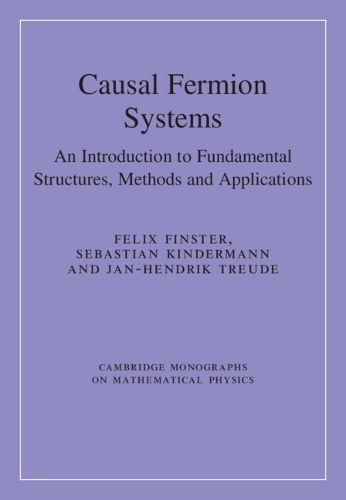Readings Newsletter
Become a Readings Member to make your shopping experience even easier.
Sign in or sign up for free!
You’re not far away from qualifying for FREE standard shipping within Australia
You’ve qualified for FREE standard shipping within Australia
The cart is loading…






The theory of causal fermion systems represents a novel approach to fundamental physics and is a promising candidate for a unified physical theory. This book offers a comprehensive overview of the theory, structured in four parts: the first lays the necessary mathematical and physical foundations; the second offers an introduction to the theory and the causal action principle; the third describes the mathematical tools for analyzing causal fermion systems; and the fourth gives an outlook on the key physical applications. With relevance across mathematical and theoretical physics, the book is aimed at graduate students and researchers interested in novel approaches to the structure of spacetime and alternative perspectives to the more established quantum field theories. It can be used for advanced courses in the subject or as a reference for research and self-guided study. Exercises are included at the end of each chapter to build and develop key concepts.
$9.00 standard shipping within Australia
FREE standard shipping within Australia for orders over $100.00
Express & International shipping calculated at checkout
The theory of causal fermion systems represents a novel approach to fundamental physics and is a promising candidate for a unified physical theory. This book offers a comprehensive overview of the theory, structured in four parts: the first lays the necessary mathematical and physical foundations; the second offers an introduction to the theory and the causal action principle; the third describes the mathematical tools for analyzing causal fermion systems; and the fourth gives an outlook on the key physical applications. With relevance across mathematical and theoretical physics, the book is aimed at graduate students and researchers interested in novel approaches to the structure of spacetime and alternative perspectives to the more established quantum field theories. It can be used for advanced courses in the subject or as a reference for research and self-guided study. Exercises are included at the end of each chapter to build and develop key concepts.